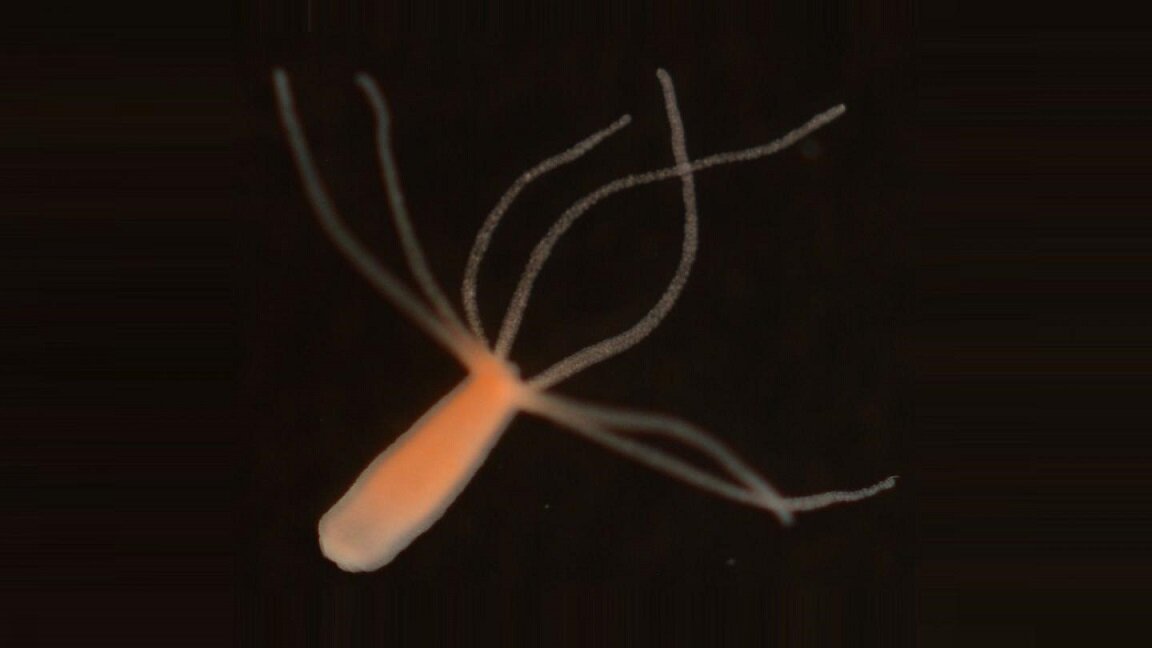We've all experienced this before; after staying awake for an extended period of time, it becomes exceedingly challenging to think clearly. Fortunately, a brief power nap can be sufficient to get things going again. You might wonder when did animals start needing sleep? Scientists have investigated the origin of sleep in animals and made some interesting discoveries.
A little power nap can do wonders - Image Credit: Universal-Sci - (CC BY 4.0)
In an attempt to uncover the evolutionary origin of sleep, a team of researchers from Kyushu University (Japan) decided to take a closer look at a very small Cnidaria called Hydra Vulgaris (see image below). Hydra Vulgari proved to be an ideal candidate for their study because of the fact that these minute water critters lack a central nervous system but still show indications of sleep.
According to Taichi Q. Itoh, one of the researchers, there is now strong evidence that the need for sleep came before the acquisition of an actual brain. In addition to Hydra Vulgari, sleep behavior was also found in jellyfish, a close relative. Although many questions remain on the emergence of sleep in animals, the Japanese scientists concluded, based on these findings, that sleep evolution took place separately from brain evolution. They published their findings in a paper in the science magazine ScienceAdvances.
Hydras are ideal creatures for further research on the subject as they are just a few centimeters long. They possess a diffuse network of nerves, but there is no centralization related to a brain. Usually sleep is quantified by measuring brain waves. But due to the lack of a brain, the team had to get creative. They decided to employ an elaborate video system to follow the movement of the little critters. The sleep-like state condition of hydras is distinguishable by a drop in movement that is disruptable by the simple flashing of light.
We humans are used to a circadian rhythm correlated to a 24 hour period of time. It turns out that the little hydras cycle through four hours of activity followed by four hours of being in a sleep-like state. Amazingly, the researchers discovered that the hydra sleep cycle could be influenced by melatonin (a hormone that has long been connected with the handling of the sleep-wake cycle in humans), increasing the duration of their sleep-like state slightly.
The hydra Vulgaris is a minuscule creature with uncomplicated anatomy. - Image Credit: Taichi Q. Itoh, Kyushu University
Oddly enough, dopamine, an organic chemical that normally causes animals to become more active also promoted hydras to revert to their sleep-like state. Itoh believes that some sleep mechanisms have been maintained during the evolution of the brain while others, like dopamine, may have switched function.
The science team tried some additional experiments with external stimuli like vibrations and sudden temperature changes. Remarkably, the following day the hydras showed signs that could be interpreted as sleep-deprivation akin to what humans experience when their sleep gets disturbed by noise disturbances.
Although many new questions have arisen from it, the recent research has uncovered a treasure trove of information on sleep, the brain, and their potential separate evolution. Be sure to check it out via the link in the further reading section below for a more in-depth look.
Further reading:
If you enjoy our selection of content consider subscribing to our newsletter (Universal-Sci Weekly)
FEATURED ARTICLES:











